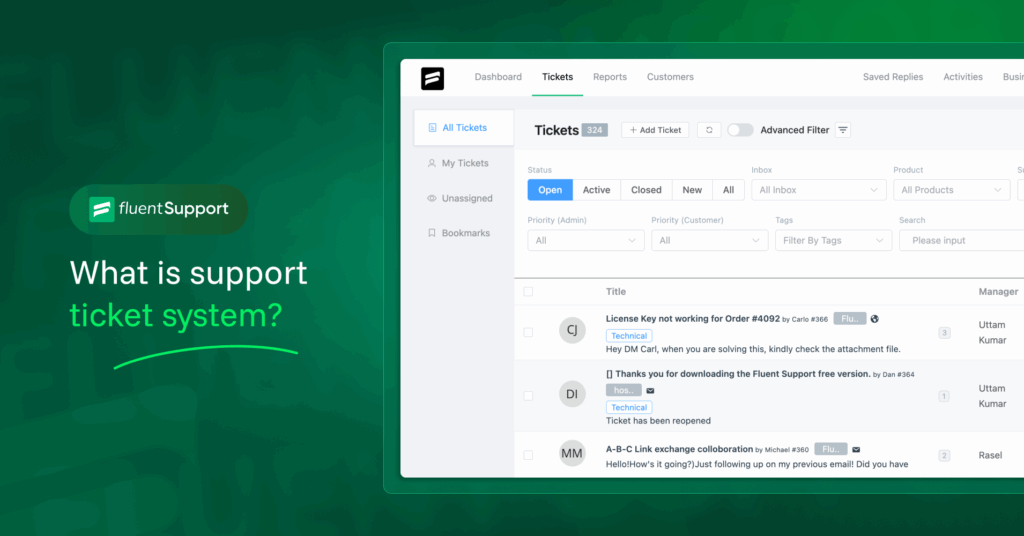
What is Customer Perception, and Why is it Important?
By Md. Ariful Basher
July 6, 2023
Last Modified: December 2, 2024
Do you know the secret of big companies’ sustainability? They value customer perception. This is one of the vital factors in being a leader in the market.
But what is customer perception, and how can it impact your business’s growth? We will dive into it one step at a time.
So, let’s start with the basics.
Perception and customer perception
Let’s define perception before we get into customer perception.
What is perception?
Perception is the ability to see and become aware of something through experience.
You could have a perception of anything. It could be a perception about style, color, fashion, or even food. You might have a perception about some product or some company as well.
What is customer perception?
Customer perception is the opinion a customer has over time about a brand or a business, whether it be during or after an interaction. The perception could be qualitative or just fully subjective.
Customer perception is not constant. You might have full control over it. We’ll get to it a bit later. First, let’s explore the benefits of it.
Why customer perception matters
For a B2C setup, as per a stat, 86% of consumers may leave a brand they trusted after only two bad customer experiences. And that’s a big number to deal with.
If the consumer has a bad or negative perception of your brand or business, this can impact your revenue. And there is a good chance that you will lose your existing customers as well.
Even a single customer’s loss can be devastating. That customer could be your loyal referral. You are losing a free marketer. A marketer with higher conversion chances.
That means you are losing your future potential customers too. As a result, your business will become unsustainable and unstable.
Perception is everything
Let’s say you are ready to invest and improve your customer perception. For this, we first need to understand what influences customer perception.
What influences consumer perception?
A lot of things can influence a consumer’s perception. And these factors can vary from business to business and even location to location.
But here we are listing five vital factors that can change a customer’s opinion about your brand.
1. Branding
How a company brands itself matters a lot. Based on that, a customer may form a perception of that company. Let’s say a company’s branding indicates luxury. Then customer perception will develop into a status symbol.
2. Customer experience
A customer’s experience starts right at the awareness stage of your brand. During the journey of your customer, any touch point can be a factor in changing their perception.
3. Word-of-mouth
This is one of the biggest influencing factors when it comes to conversion. A suggestion from a friend, family member, or loyal customer referral works like a charm.
A study showed that a recommendation from a close friend or family has a 40% higher purchase rate than any other channel.
4. Service quality
After-sale service plays a vital role in making a customer loyal. Bad service can also increase customer churn. So, investing in a good support system can change your business game.
5. Emotional connection
For a customer, an emotional connection can be built in different ways. There are lots of ways to do the trick. It could be the story of the brand, or it could be the personal relationship with an agent or marketer.
Be where your customers are!
Hear your customers wherever they need you.
5 Ways to Improve Customer Perception
Previously, we mentioned that we can have full control over perception. And here are five points to do so and improve consumer perception:
1. Build a positive connection
Customers who previously had positive experiences spend 140% more than those who had negative experiences. From the first touchpoint of the customer journey, whether through the website or by any digital business card exchange, you need to build a positive relationship with your customer.
That’s why real human interaction is a must. It will ensure the personalized service that a customer always wants.
Connect on an emotional level instead of being technical. From time to time, being casual can build a customer’s bond with a brand.
You can use a help desk system like Fluent Support to take personal notes on customers. So that you can wish a happy birthday or happy anniversary. This kind of personal interaction is the mantra for creating loyal customers.
2. Ask for feedback
Never discourage feedback, even if it’s negative. If a customer gives you a negative comment, you can use it to improve your service. Even a 1-star can be changed into a 5-star with better communication.
This will give you a structured idea about your service. You need to know what your customer is thinking about and what they want from you.
Listening to the customer empowers them and makes them feel special. This will heavily impact their perception of your brand.
3. Work on positive language
Positive attitudes help people open up and express themselves. So, in general, when you are communicating with a customer, try to use positive language.
Now what is positive language? It’s a communication pattern with your customer at any touch point that includes proper information, is proactive, and is helpful.
A good, positive language during communication makes your customers confident about your brand. And this is a good referral pointer when loyal customers refer your brand to potential customers.
4. Focus on customer service
A well-trained marketing, sales, and support team can make a business sustainable. To understand your customer, you have to listen first. Active listening is vital to building a loyal customer base.
If a brand can solve customer issues with better service, they usually recommend the brand to others without hesitation. A good service also encourages clients to provide testimonials to showcase.
5. Create emotional connections
Connect with your clients on an emotional level. Don’t just sell your service; share a story as well. Try to connect your customer with your journey.
Don’t limit yourself to stories; as we mentioned earlier, emotional connections can be established via positive communication as well.
Emotionally connected clients are like an asset to you. They are loyal, they bring in new customers, they provide new ideas, and most importantly, they create a great brand perception.
How to measure customer perception
There are lots of different ways to find out the customer’s perception. The big ones are net promoter score, or NPS; customer satisfaction score, or CSAT; and Customer Effort score, or CES.
You can use a user experience survey to find out the data. And make a KIP to follow and improve your consumer’s perception of your brand.
We highly recommend reading the articles below. We have covered a variety of topics in depth to measure customer perception.
Final words
It doesn’t matter what field you are in; you are not alone. It’s a highly competitive market. To survive in this flaming market, everyone must give their best. The consequence of this is a rising bar for customer expectations.
You have to catch up with that rising bar. Otherwise, you will fall behind. However, fostering a favorable customer perception can guarantee you a front-row seat in your market.
Your own Support Portal in 5 minutes!
Start off with a powerful ticketing system that delivers smooth collaboration with unlimited room for your customers.




















Leave a Reply